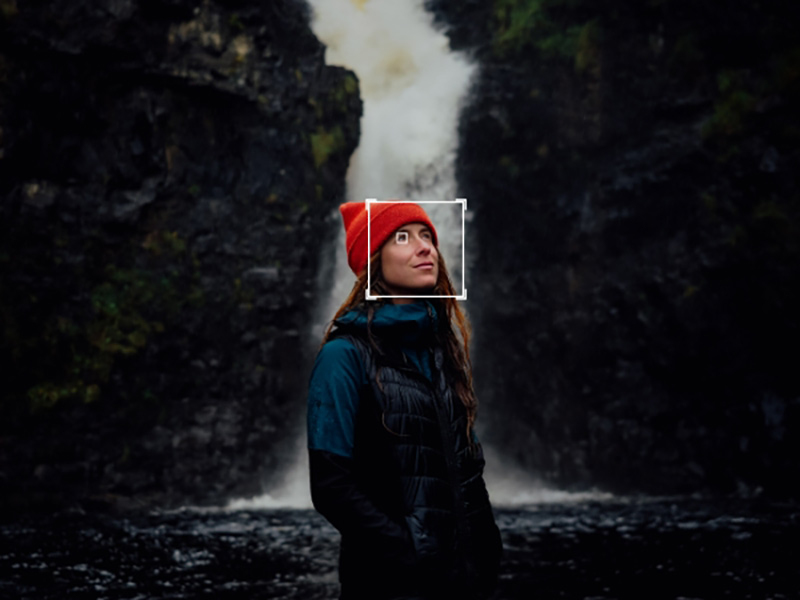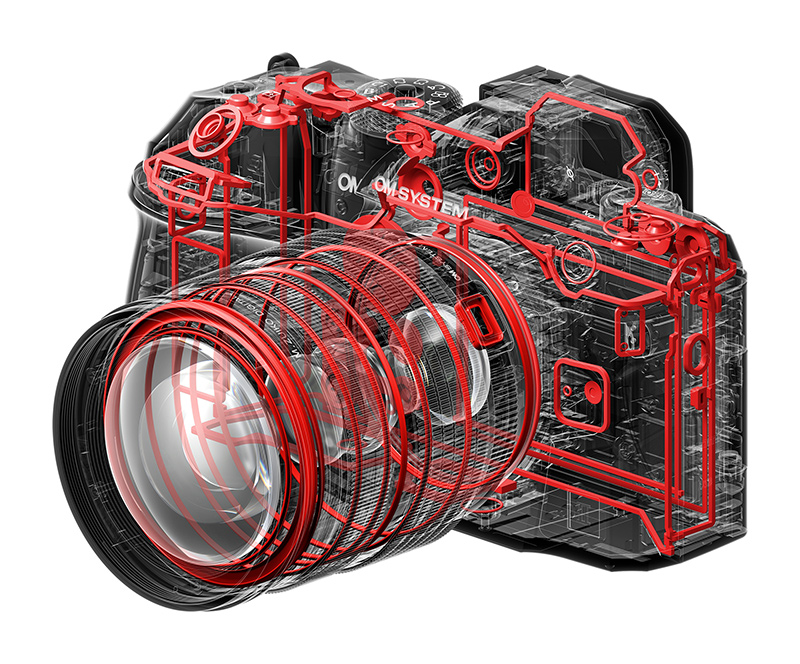- Call us: 01444 237070
- Contact Us
- Stores
- Sign In / Register
-
- Back
- Used Cameras
- Used Accessories
- Used Lenses
- Used Video
- Used Film Equipment
- Used Stock Alert
- Used Blank Test
- Sell or Part Exchange
- Used Clearance
- Recently Added Used Equipment
- Park Picks
- All Used Black Friday Deals
- Faulty
- Trade-In
- Blog
- New in
- Call us
- Contact us
- Stores
- Sign in
- Categories
- Tips & Inspiration
- Reviews
- News
- Events
- Features
- Buying Guides
- Competitions
OM System OM-1 Mark II Review
Having stepped into the legacy of Olympus, OM System has embarked on a journey, which ushers in a new era for micro four-thirds photography with a slew of innovative camera and lens launches since 2021.
OM System OM-1 Mark II Video Review
Building upon the huge success of its predecessor, the OM-1 Mark II arrives as a testament to OM System's dedication to this compact yet powerful imaging system. Since the launch of the original OM-1 in 2022, OM System has been busy refining their flagship camera for the next generation.
In this OM System OM-1 Mark II review we take a deeper dive, exploring its upgrades, new capabilities and features, and uncover the strengths that make it stand out in the micro four-thirds arena. From its refined imaging capabilities to the ergonomic design, and advanced computational features, we hope to provide invaluable insights into what the OM-1 Mark II camera brings to creators.

When did the OM System OM-1 Mark II come out?
Released on January 30, 2024, the OM-1 Mark II arrives just two years after its predecessor. This model finalises the transition from Olympus to OM System branding on the OM-1 series cameras, reflecting OM System's establishment in the market.

How much does the OM-1 Mark II cost in the UK?
The OM System OM-1 Mark II camera costs £2,199.99, representing a reasonable £200 bump from its predecessor's RRP. This positions the OM-1 Mark II at the premium end of micro four thirds cameras, whereas the OM-5 is available at £1,199.00, offering a budget-friendly alternative for enthusiast-level photographers.

OM-1 Mark II upgrades
OM System has overhauled the camera, making a series of refinements and upgrades for an improved shooting experience, as well as adding entirely new features to the Mark II flagship model. The list below highlights the most notable of these updates:
- World’s first Live GND functionality *new
- Advanced AF Performance *perfected
- Enhanced AI Detection AF *perfected
- Human subjects added to AI Detection AF *new
- Blackout-free High Speed Sequential Shooting *improved
- Up to 8.5 stops Image Stabilisation *perfected
- 14-Bit handheld RAW High Res Shot *new
- Vertical video *new
- Rubbery dials *new
- 213 RAW buffer at 120fps S-AF and 256 RAW buffer 50/ps C-AF *improved
- Super Control Panel updated with easy subject detection settings *improved
Incorporating an enhanced AWB algorithm, the OM-1 Mark II also elevates colour reproduction. It excels in diverse and challenging lighting scenarios, including mixed lighting, to ensure your photos exhibit vivid, accurate colour tones. This eliminates inconsistencies, delivering true-to-life results regardless of the lighting conditions.

What is the OM-1 Mark II camera for?
With a combination of rugged build with comprehensive weather sealing, superb image stabilisation and low overall weight, the OM-1 Mark II has all of the attributes outdoor photographers need. The 2x crop factor effectively doubles lens reach too, making it especially suitable for nature, birds, wildlife, macro and sports.
Advanced noise reduction, extended dynamic range, deep learning AI subject AF, and various refinements make it possible to achieve exceptional results across a wide range of genres, from landscapes to travel, portraits, documentary, and everyday moments.

Computational photography features
Building on the original camera's computational photography features, this generation introduces yet more groundbreaking innovations. These include the world's first positionable Live GNDs and the ability to capture 50MP handheld RAW high-res shots, which we explore below.

Landscape image captured with the Live GND feature in the OM-1 mark II
Live GND shooting (Graduated ND filters)
The world’s first Live GND feature promises to revolutionise how landscape and other outdoor photographers can pull down the highlights using computational photography to replicate the effects of using a half ND, or graduated neutral density filters.
GND2, GND4, or GND8 are available in soft, medium or hard grads, with realtime manipulation via the EVF or LCD. This approach enables precise customisation of the effect's position and angle, giving photographers unique control to create their desired images.
Furthermore, OM System has added an additional ND128 to the Live ND filter, extending the camera’s capability to 7-stops for long exposure photography, without the need for additional filters. This functionality not only saves time, weight, and money, but also reduces the amount of gear you need to carry, which is crucial for outdoor location photography where every gramme matters.

14-bit RAW High Res Shot
The introduction of 14-bit RAW to high resolution modes does away with any reservations users might have about the he OM-1 Mark II’s resolution. You can now capture handheld shots at around 50 megapixels, and tripod-mounted 80MP shots with triple the number of tones recorded in the final RAW image.

Refined AI Detection AF
While the OM-1 introduced AI Detection AF, the Mark II refines this significantly. The camera now accurately tracks subjects within the frame, ensuring they remain in focus. It extends its capability to follow intricate details like driver's helmets or the eyes of birds and other animals, something not possible with manual operation.

Pro Capture and higher buffering
Pro Capture starts recording at the halfway shutter press (1st release) and stores previous frames when the shutter is fully pressed (2nd release). This ensures you never miss fleeting moments, with high-speed sequential shooting at up to 120fps during AF/AE lock and around 50fps during AF/AE tracking.
With an expanded buffer memory, the OM-1 Mark II now offers retrospective capture of about 99 shots in Pro Capture mode, a notable increase from the OM-1's 70 frames. In sequential shooting, it can capture approximately 219 frames in JPEG or 213 frames in RAW at around 120fps, a significant improvement compared to the OM-1's approximately 92 frames, greatly enhancing its high-speed shooting capabilities.

Other features
- Improved menu accessibility with the trash barrel button now serving as a quick menu shortcut, which is especially advantageous when using telephoto lenses.
- Expanded AF/AE tracking high-speed sequential shooting (SH2) settings now provide options for 12.5 fps and 16.7 fps.
- When shooting continuously at 25 fps or lower, the minimum shutter speed is fixed at 1/160 sec.
- Enhanced finger grip on the dial surfaces, utilising elastomer processes for a better hold.
- Compatible with UVC (USB Video Class) / UAC (USB Audio Class), allowing seamless PC connection for use as a webcam.
- Provides support for easy vertical video capture, ideal for social media platforms and similar applications.

OM-1 Vs OM-1 Mark II comparison
The table below compares key features between these two generations of camera.
|
|
OM System OM-1 |
|
|
Sensor |
4/3'' Stacked BSI Live MOS sensor |
4/3'' Stacked BSI Live MOS sensor |
|
Pixels |
20.4 Megapixels |
20.4 Megapixels |
|
Processor |
TruePic X Dual Quad Core Processor |
TruePic X Dual Quad Core Processor |
|
Viewfinder |
5760K dots |
5760K dots |
|
LCD |
3” Vari-angle LCD Touch Panel with 1620K dots |
3” Vari-angle LCD Touch Panel with 1620K dots |
|
Stabilisation |
Up to 8.5 EV steps |
Up to 8 EV steps |
|
Focusing system |
High-speed imager AF: Imager phase detection AF and imager contrast AF used in combination |
TTL phase difference detection system, contrast detection system |
|
Focus areas |
1053 points / cross-type phase detection AF |
1053 points / cross-type phase detection AF |
|
Intelligent Subject Detection AF |
Human, Formula cars, rally cars, motorcycles / Aircraft, helicopters / Bullet trains, standard trains, steam locomotives / Birds / Dogs, cats |
Aircrafts, Birds, Bullet trains, Cats, Dogs, Formula cars, Helicopters, Motorcycles, Rally cars, Standard trains, Steam locomotives |
|
Exposure modes |
Exposure bracketing ISO bracketing HDR bracketing |
Exposure bracketing ISO bracketing HDR bracketing |
|
Computational features |
|
|
|
Resolution |
JPEG: 10368 x 7776 / 8160 x 6120 / 5760 x 4320 RAW: 10368 x 7776. Equivalent to 80M / 50M / 25M pixel sensor (8 shots combined into a single image using sensor shift) |
JPEG: 10368 x 7776 / 8160 x 6120 / 5760 x 4320 RAW: 10368 x 7776. Equivalent to 80M / 50M / 25M pixel sensor (8 shots combined into a single image using sensor shift) |
|
Max. sequential shooting |
Approx. 120fps (selectable 12.5 16.7, 60, 100, 120fps without blackout) |
Approx. 120fps (selectable 60, 100, 120fps without blackout) |
|
Max frames at 120fps |
213 |
92 |
|
Movie Recording |
4K 60p |
4K 60p |
|
Format |
MOV(MPEG-4AVC/H.264)/ MOV (HEVC/H.265) |
MOV(MPEG-4AVC/H.264)/ MOV (HEVC/H.265) |
|
Picture mode |
Flat, OM-Log400, HLG (View assist compatible) |
Flat, OM-Log400, HLG (View assist compatible) |
|
Weight |
511g |
511g |
What hasn’t changed in this model?
OM System has kept the best features, which place the camera at the forefront of technology. These include IP53 weather sealing, the 5.76 million dot OLED viewfinder, and the same sensor and processor. This combination delivers refined 20MP/50MP/80MP images, 4K 60p video and fast speeds at up to 120fps.
What are the best accessories for the OM-1 Mark II?
With an almost identical body design, those upgrading will be able to use any existing camera accessories with the new model. This is great news for creators who are already invested in the MFT ecosystem, which offers a huge variety of accessories for any genre. Amongst the best options are:
- OM System HLD-10 Power Battery Grip – The camera grip not only extends the power capacity to up to 1000 shots but also provides both vertical and horizontal controls, enhancing the overall ergonomics for studio shooting.
- OM System SBCX-1 Battery And Charger Kit – Save time with this high-capacity, 2,280 mAh lithium-ion battery with charger kit, which can simultaneously charge two BLX-1 Lithium-Ion Rechargeable Batteries.
- OM System RM-WR1 Wireless Remote Control – IP57 weather resistant Bluetooth trigger, which offers camera control from up to 5m away.
- Olympus FC-WR Flash Commander – off camera flash controller for multiple flash units, which can be remotely triggered from the camera.
- Olympus FL-900R Wireless Flash – Bright GN 58 flashgun, with unique support for High Res. Shot, Focus Stacking, and Focus Bracketing.
- Olympus STF-8 Macro Flash – The world's first macro flash for OM System with a dust, splash and freeze-proof (10°C) construction.

Lens ecosystem
One of the major advantages to the system is the huge variety of compact, lightweight and affordable micro four thirds lenses. These include models such as the M.Zuiko Digital ED 90mm F/3.5 Macro IS PRO Lens, which delivers professional image quality, IP53 weather sealing, 7-stops image stabilisation and 2x magnification.
There are countless others too, such as the simultaneously launched OM System M.Zuiko Digital ED 150-600mm f/5.0-6.3 IS Lens, which we look at more closely in our first look review here.
The OM System M.Zuiko Digital ED 9-18 f/4.0-5.6 II Lens also made an appearance, which provides a new, affordable, and extremely lightweight ultra wide angle zoom for enthusiasts.

The OM System OM-1 Mark II camera doesn't mark a revolutionary departure from its predecessor. Instead, it represents an evolution in the world of micro four thirds photography, taking the impressive foundation laid by the original OM-1, and elevating it with comprehensive updates.
From powerful imaging features and advanced AI tracking, to a host of computational photography features, it builds on the past, creating a device that doesn't reinvent the wheel, but instead fine-tunes it to offer an even more refined and versatile tool for photographers seeking excellence for their craft.
Order your OM System OM-1 Mark II Digital Camera Body today to discover how it can transform your images with storytelling excellence.
If considering an upgrade or move from another system, why not grab a free quotation to discover how much we’ll pay you for your unwanted gear. It’s not only fast and free, but takes all of the hassle when you want to sell your camera to upgrade.
Share this post:
By Nick Dautlich on 30/01/2024
Nick Dautlich
Senior Content Writer and Product Reviewer
Nick Dautlich is the Senior Content Writer and Product Reviewer at Park Cameras, with over 15 years of photography experience. A Sony Imaging Professional and expert reviewer, Nick has worked with major brands such as Canon, Sony and Nikon. His work is also featured on Vanguard World UK’s website, Capture Landscapes, and Shutter Evolve. Nick’s photography includes National Trust projects and magazine covers and he is passionate about landscapes and storytelling. Nick also enjoys hiking and teaching his children about nature. Learn more on his profile page.

Trade in your old equipment
Fast and easy trade in service ensures your old gear is collected efficiently and you are paid quickly! It's very simple to trade in your unwanted photography gear. Just head over to our dedicated Sell or Part Exchange page, fill out the details, and we'll get back to you with an offer for your old gear. Take the cash, or put it towards the cost of your new gear. It's up to you! Find out more
sign up to the newsletter
Keep up to date on the latest photography news, events and offers. Sign up now

